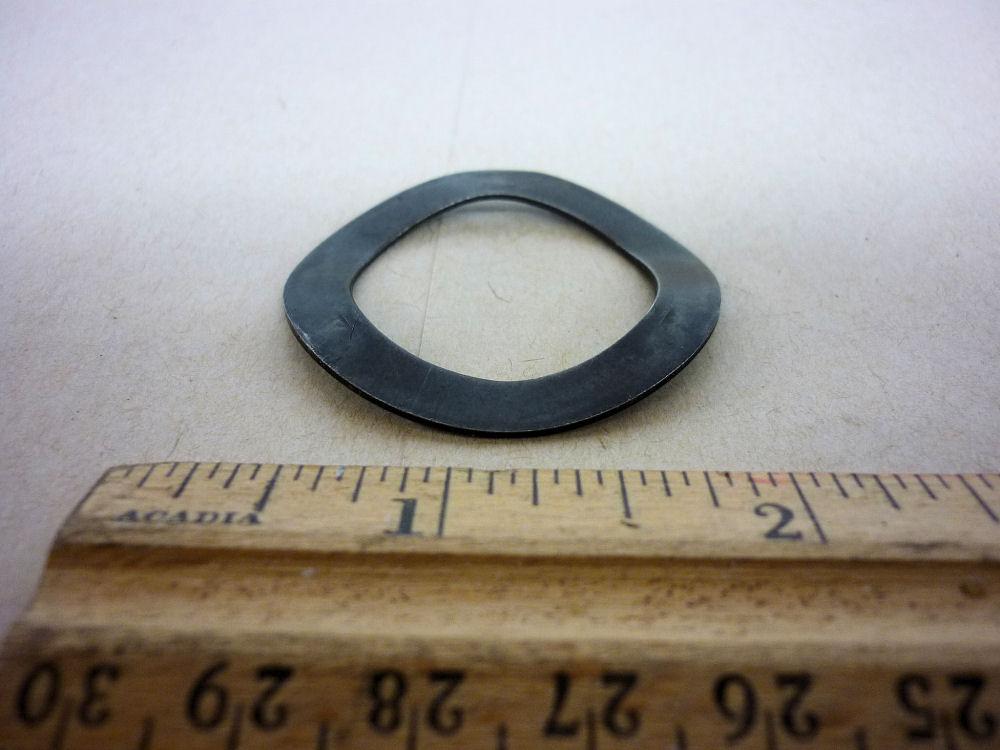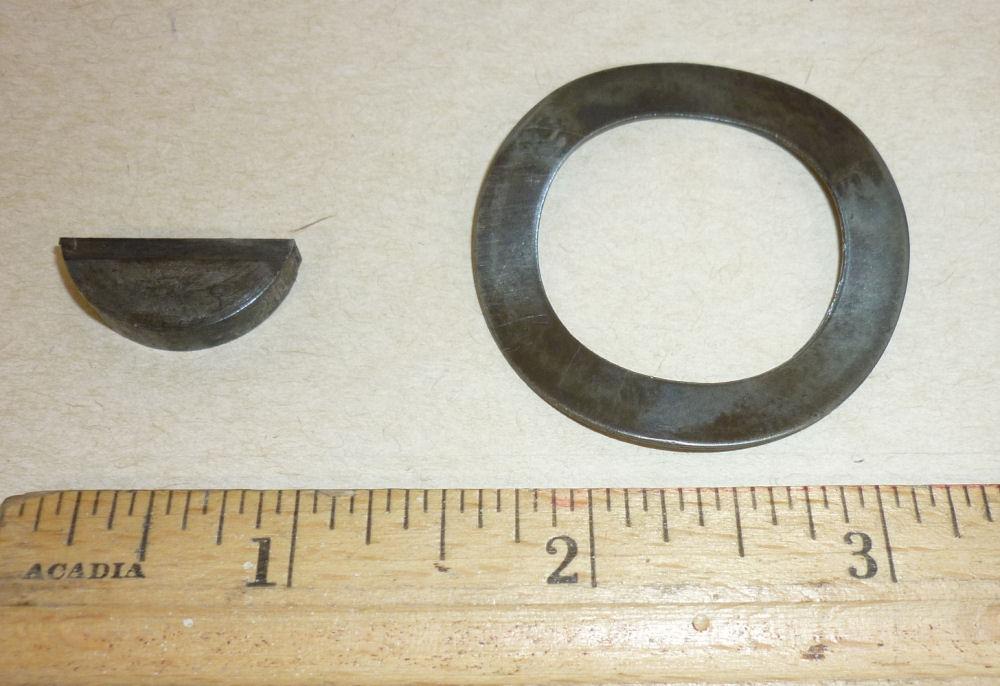Joined: Aug 2017 Posts: 952 Threads: 38
Reputation:
7
Goes on crank, between rear main and flywheel on 1.1/8” crank
Joined: May 2018 Posts: 2,793 Threads: 532
Reputation:
20
Location: Peak District, Derbyshire
Car type: 1929 Chummy, 1930 Chummy, 1930 Ulster Replica, 1934 Ruby
It's called a "belleville" washer - the design shown being one of several types that carry the name of its French inventor. Besides its use as a locking washer, they can also be positioned between two surfaces able to move relative to each - the idea being to impose a degree of (often adjustable) friction that allows one half to be moved easily, yet stay in its new position when the whole assembly rotates e.g. they are sometimes found on machine tools to allow a micrometer dial on a feed screw to be zeroed or its position altered
Joined: Aug 2017 Posts: 1,660 Threads: 38
Reputation:
15
Location: Malvern, Victoria, Australia
I think the Bellville is a conical washer- this is a Wave Washer or Wave Spring.
The important thing in the Austin application is to ensure there is still some 'wave' when the Flywheel is pulled up tight on the taper
Joined: Aug 2017 Posts: 388 Threads: 80
Reputation:
0
Location: CALGARY AB CANADA
Ok , now that it has been confirmed that this compression washer goes between the flywheel and the inner bearing race what is it that it is supposed to do?
Measurements show that it is not compressed at all with about .010" to .015" clearance rendering it useless if it is supposed to compress between the flywheel and the inner bearing race.
Is there something else that is supposed to go on the crank between the compression washer and flywheel ?
Just a little puzzled at this point.
Stephen
Joined: Aug 2017 Posts: 3,209 Threads: 100
Reputation:
26
Location: Darkest Bedfordshire
Steve, you don't say what year your engine is? As far as I'm aware engines up to 1930 had a washer behind the rear bearing then a felt seal before the flywheel. I've never worked on a pre-1930 engine but I imagined the washer was flat. There is no seal other than the felt. Later engines replaced this arrangement with a dished washer (oil thrower) between rear bearing and flywheel, dispensing with the other parts. Again there is no seal. A spring washer here has possibly been added by a previous owner to inhibit the rear main bearing from spinning on the shaft (which it won't if it's loose). Most people do the flywheel nut up VERY tight, so the flywheel is forced up the taper, is there still a clearance then? The ideal situation is the flywheel fully home on the taper but the rear bearing just pinched by the thrower to stop it spinning - that's why they put compressible 'dimples' in the throwers. The bearing assembly must not hold the flywheel off the taper. If you have a rear lip seal it is a modern aftermarket part and the spring washer has been put in purely to hold the rear bearing from spinning.
Joined: Aug 2017 Posts: 388 Threads: 80
Reputation:
0
Location: CALGARY AB CANADA
Chris, the engine is a 1 1/8 " crank 1929 unit.
The flywheel and crank were tightened up properly when this observation was noted. Zetomagneto identified the location of this washer which was not used on the engines with the larger cranks.
The washer mentioned is listed in the parts book for 1929 ( I managed to find it ) as "Flywheel distance piece BB14"
Without this washer there is a gap of about 1/8" between the flywheel and the bearing inner race, so I made the assumption that this washer was supposed to be fitted there and under compression which it isn't at the moment. This leads me to think that the washer has compressed over the years, but not sure how. The crank and flywheel are both stamped with the same serial number so they are the original matched pair.
My current thought is that the washer is supposed to compress when the flywheel is fully home and tightened on its taper such that the bearing is loaded without the washer preventing the flywheel from seating properly on the taper.
Stephen






